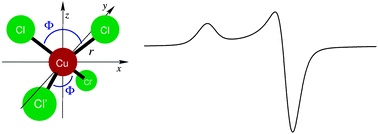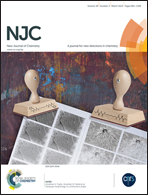Tetrahalidocuprates(ii) – structure and EPR spectroscopy. Part 2: tetrachloridocuprates(ii)†
Abstract
We present and discuss the results of crystallographic and electron paramagnetic resonance (EPR) spectroscopic analyses of five tetrachloridocuprate(II) complexes to supply a useful tool for the structural characterisation of the [CuCl4]2− moiety in the liquid state, for example in ionic liquids, or in solution. Bis(benzyltriethylammonium)-, bis(trimethylphenylammonium)-, bis(ethyltriphenylphosphonium)-, bis(benzyltriphenylphosphonium)-, and bis(tetraphenylarsonium)tetrachloridocuprate(II) were synthesised and characterised by elemental, IR, EPR and X-ray analyses. The results of the crystallographic analyses show distorted tetrahedral coordination geometry of all [CuCl4]2− anions in the five complexes and prove that all investigated complexes are stabilised by hydrogen bonds of different intensities. Despite the use of sterically demanding ammonium, phosphonium and arsonium cations to obtain the separation of the paramagnetic Cu(II) centres for EPR spectroscopy no hyperfine structure was observed in the EPR spectra but the principal values of the electron Zeeman tensor, g∥ and g⊥, could be determined. With these EPR data and the crystallographic parameters we were able to carry out a correlation study to anticipate the structural situation of tetrachloridocuprates in different physical states. This correlation is in good agreement with DFT calculations.


 Please wait while we load your content...
Please wait while we load your content...